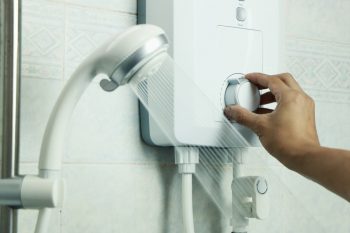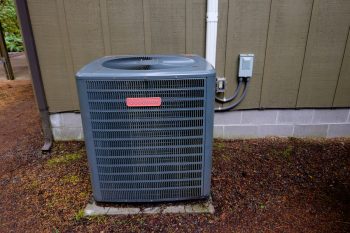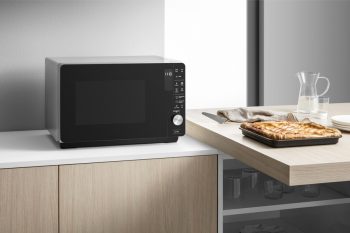
The thermal switch is a crucial safety feature in your water heater. It is designed to prevent overheating and potential fire hazards by interrupting the power supply when the temperature exceeds a set limit. However, just like any other component, the thermal switch can experience issues that may necessitate a reset. In this comprehensive guide, we will walk you through the steps on how to reset the thermal switch on your water heater.
To reset the thermal switch on your water heater, first ensure safety by turning off the power supply. Locate the thermal switch, which is usually on the control panel or thermostat. Press the small reset button in the center of the thermal switch. Restart the water heater by lighting the pilot for gas water heaters or switching the circuit breakers back on for electric ones. Monitor the water heater to ensure it’s functioning properly.
Why You Might Need to Reset Your Thermal Switch
There are several reasons why you might need to reset the thermal switch on your water heater. These include:
- Faulty thermostat: If your water heater’s thermostat is not reading the temperature accurately, it could lead to overheating, causing the thermal switch to trip.
- Loose wiring: Loose electrical connections can generate heat, triggering the reset device.
- Corrosion: Moisture can lead to corrosion of internal parts, including the thermostat. This can affect the performance and safety of your water heater, causing the thermal switch to trip.
- Grounding issue: If the heating element is shorted to the ground, it can cause high water temperatures and cause the reset button to trip.
- Faulty switch: The high limit switch itself could be malfunctioning, causing the tripping issue.
Signs Your Thermal Switch Might Have a Problem
Before you can reset your thermal switch, you need to be certain it’s the cause of your water heater’s issues. Here are some signs to look out for:
- Repeated tripping of the reset button: If your water heater’s reset button keeps tripping, it could be a warning sign of a larger issue.
- Inconsistent water temperature: If your water temperature is not consistent or is noticeably lower than it used to be, this could be a sign of a problem with the thermal switch.
- Frequent power outages or shortages: As an electrical water heater ages, the heating element can short circuit, which can trip the breaker or blow a fuse.
- Overheating: If your water heater starts to overheat, it could be caused by a build-up of sediment in the tank or hard water build-up on the heating element.
Steps to Reset Your Thermal Switch
- Ensure safety: Before starting, make sure to turn off the power supply to the water heater. If it’s a gas water heater, turn off the gas supply as well.
- Locate the thermal switch: The thermal switch is usually located on the water heater’s control panel or thermostat.
- Press the reset button: Press the small reset button in the center of the thermal switch.
- Restart the water heater: If you have a gas water heater, try lighting the pilot using the instructions on the water heater’s label. For electric water heaters, switch the circuit breakers back on.
- Monitor the water heater: After resetting the thermal switch, check if the water heater is functioning properly.
Safety Precautions
When resetting a thermal switch on a water heater, there are several safety precautions to consider:
- Always turn off the power supply before working on the water heater.
- Check for obstructions in the vents at the top and bottom of the water heater.
- Ensure that there are no obstructions in the draft hood at the top of the water heater and that the air vents at the bottom are not blocked.
- If you have recently painted the room or experienced a gas spill, open windows and doors to allow fumes to dissipate before working on the water heater.
Conclusion
Resetting the thermal switch on your water heater is a relatively simple process that can help resolve temporary issues. However, if your thermal switch keeps tripping, it’s indicative of a more serious problem that needs to be addressed. In such cases, it is recommended to consult a professional for further assistance. Remember, the thermal switch is a safety device designed to protect your water heater from damage due to excessive heat. Therefore, any issues with it should be taken seriously.
Frequently Asked Questions
What does the thermal switch do in a water heater?
The thermal switch in a water heater acts as a safety device. It interrupts the power supply when the water heater’s temperature exceeds a set limit, thereby preventing potential overheating and fire hazards.
How often should I reset the thermal switch on my water heater?
The thermal switch on your water heater should not need to be reset frequently. If you find yourself having to reset it regularly, this could indicate a larger problem with your water heater that needs professional attention.
What causes a thermal switch to trip?
A thermal switch can trip due to several reasons. These include a faulty thermostat, loose wiring, corrosion, a grounding issue, or a faulty switch itself.
How can I tell if my thermal switch is faulty?
Signs of a faulty thermal switch include repeated tripping of the reset button, inconsistent water temperature, frequent power outages or shortages, and overheating of the water heater.
Is it safe to reset the thermal switch on my own?
Yes, it is generally safe to reset the thermal switch on your own, provided you follow safety precautions such as turning off the power supply and checking for any obstructions in the vents. However, if you are uncomfortable doing so or if the switch keeps tripping, it’s best to consult a professional.












